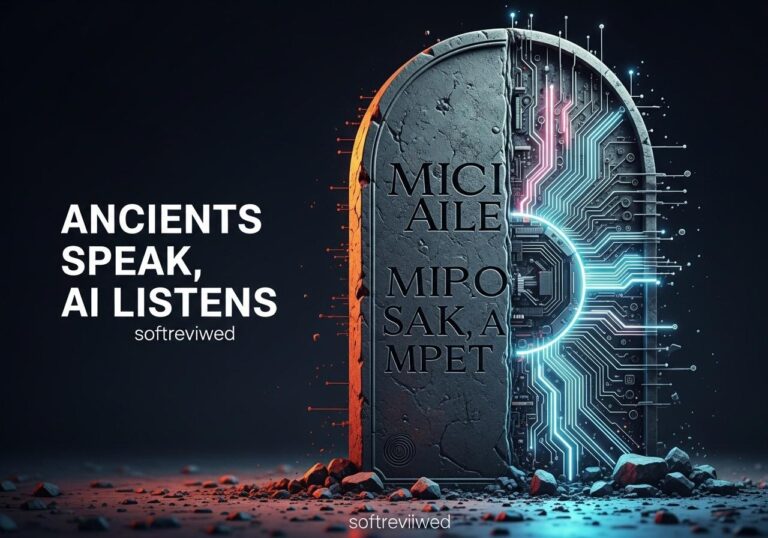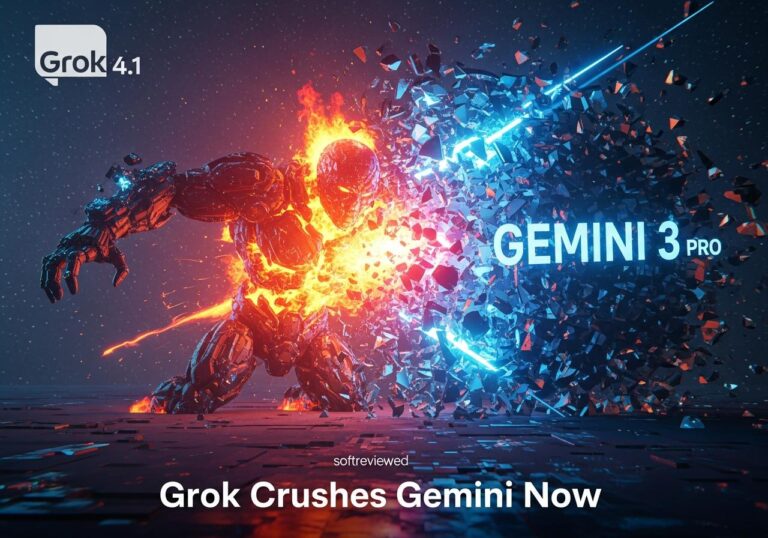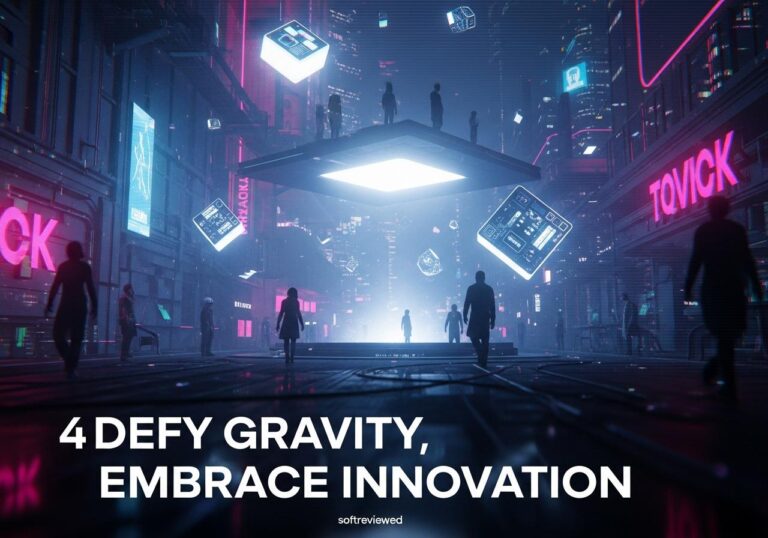Aeneas: AI for Ancient Text Analysis
How artificial intelligence is revolutionizing the study of Latin inscriptions and ancient texts
Generative AI for Ancient Texts
Aeneas interprets, attributes, and restores fragmented Latin inscriptions using advanced language analysis, bringing ancient voices back to life through computational linguistics.
Filling Gaps in Time
The tool predicts missing words and narrows inscriptions’ composition dates to within 13-year windows, providing unprecedented temporal precision for historical artifacts.
Multimodal Data Handling
Processes text and images to analyze stylistic elements, abbreviations, and geographical origins, creating a comprehensive understanding of ancient documents.
Massive Database Scanning
Searches thousands of Latin inscriptions to find contextual parallels, aiding researchers in dating and provenance determination through pattern recognition.
Open-Source Adaptability
Freely available to historians, with open-source code and datasets adaptable to other ancient languages and scripts, democratizing access to advanced epigraphic tools.
Solving Fragmented Evidence Challenges
Addresses common hurdles like moved artifacts, broken stones, and undated texts through pattern recognition, helping complete the puzzle of ancient history.
Imagine finding an ancient Roman stone with missing chunks—whole stories lost to time. Now, picture an AI tool that helps bring those stories back to life, matching scattered fragments with jaw-dropping accuracy. That’s exactly what DeepMind’s Aeneas AI is doing for the world’s historians and archaeologists. This innovative model melds classical studies with artificial intelligence, reshaping how we interpret the past.
In this article, we’ll explore how Aeneas AI works, its impact on historical research, expert opinions, and the broader implications for society and technology. Along the way, we’ll highlight key features, expert reactions, and even let you try Aeneas AI for yourself through an official link.
Ancient Puzzles, Modern Solutions: The Foundation of Aeneas
Ancient inscriptions are like fascinating jigsaw puzzles—pieces of stone worn down by centuries, carrying voices from the past just waiting to be heard. Traditionally, historians spent weeks (even months!) combing through catalogues to spot patterns, fill in gaps, and contextualize these texts.
Enter Aeneas AI:
- Developed by Google DeepMind and partners at the University of Nottingham, Oxford, Warwick, and Athens University of Economics and Business.
- Trained on a massive dataset of over 176,000 Latin inscriptions, digitized from monuments, tombstones, and everyday objects.
- Designed to help historians restore, date, and geolocate ancient texts faster and with stunning precision.
How Aeneas AI Works: More Than Just Filling in the Gaps
What sets Aeneas AI apart isn’t just raw computing power—it’s the model’s ability to interpret and restore ancient inscriptions by:
- Analyzing both text and images (multimodal processing)
- Searching for “parallels”—inscriptions with similar wording, structure, and historical context
- Suggesting probable words for missing sections (even when the gap length is unknown)
- Estimating the date (within ~13 years of expert consensus) and location of each inscription
📈 Aeneas AI in Numbers:
| Metric | Value |
|---|---|
| Number of inscriptions used | 176,000+ |
| Accuracy for gap restoration | ~73% (for gaps up to 10 characters) |
| Date estimation precision | Within 13 years of historians’ estimates |
| Evaluation with historians | 90% found Aeneas’ suggestions useful |
| Open source & education | Code, data, and curriculum available |
Aeneas organizes each ancient text into a “historical fingerprint,” instantly surfacing relevant parallels. Think of it as an assistant spotting connections a human expert might miss, all in seconds instead of months.
📌 Why It Matters: Unlocking the Secrets of Ancient Rome
Historians have long struggled with incomplete, damaged, or context-less inscriptions. With Aeneas AI:
- Archaeology gets a speed boost—what took months can happen in minutes.
- Lost knowledge is reclaimed, such as missing edicts, dedications, or personal stories.
- Gadfly theories and longstanding debates (like the dating of famous texts) receive new clarity.
- The model can even aid museum curators and teachers, making primary sources more accessible for students and the general public.
An epigrapher, Dr. Thea Sommerschield, notes the experience is “like finding matching jigsaw pieces across the Roman Empire.”
Digging Deeper: The Data and Technology Behind Aeneas

Aeneas AI is built on cutting-edge machine learning, leveraging transformer-based neural networks. It combines:
- Contextual embeddings,
- Specialized “heads” for text restoration, dating, and geographical attribution,
- Cross-referenced data from the Latin Epigraphic Dataset, uniting materials from databases in Rome, Heidelberg, and elsewhere.
Here’s how the system operates:
- Input: Transcribed text (often with missing pieces) and images of the inscription.
- Processing: Aeneas analyzes, parses, and generates “embeddings”—deep representations of meaning, context, and style.
- Output: It matches the inscription to similar texts, suggests possible restorations, and provides likely dates and locations.
Comparison Table: Aeneas AI vs. Traditional Epigraphy Tools
| Feature | Traditional Methods | Aeneas AI |
|---|---|---|
| Speed of analysis | Weeks to months | Seconds to minutes |
| Scale of dataset scanned | Limited (manual) | 176,000+ inscriptions |
| Restoration accuracy | Depends on expertise | ~73% for gaps |
| Multimodal input (text+image) | Rare | Core feature |
| Adaptability to new languages | Manual retraining | Being actively developed |
| Human-AI collaboration | None | Historians + AI together |
The Power of Collaboration: Historians Meet Machine Learning
AI is not replacing historians, but empowering them. In a groundbreaking study, Aeneas was tested with 23 historians who were asked to:
- Restore missing text,
- Date inscriptions,
- Identify the origins.
When pairing historian expertise with Aeneas’ suggestions:
- Dating accuracy narrowed from 31 years (human-only) to 13–14 years.
- 90% said Aeneas unearthed helpful research leads they wouldn’t have found quickly on their own.
- Confidence improved by 44% on critical tasks.
As Dr. Yannis Assael emphasizes, “Aeneas is a tool, not a replacement for human historians. It’s about synergy: bringing together human interpretive skills with model-powered speed and depth.”
Aeneas in Action: Real-World Results and Notable Successes
Case Study 1: The Res Gestae Divi Augusti
This iconic Roman inscription, detailing the life of Emperor Augustus, has long puzzled experts due to incomplete sections and contentious debates over dates. Aeneas AI mapped out all the mainstream scholarly theories, offering a ranked, data-driven distribution of dates that mirrored the leading human hypotheses.
Case Study 2: Linking Altars in Modern Germany
A ruined altar from Mogontiacum (now Mainz, Germany) was linked to an earlier one from the same region—connections Aeneas spotted in seconds through subtle linguistic cues, which scholars had previously missed.
Case Study 3: Military Diploma Restoration
At the Metropolitan Museum of Art, a bronze military diploma missing text was filled in, matching parallel examples from across the Empire.
Mixed Reactions: Expert Opinions and Ethical Questions Unpacked
While the results are impressive, not everyone is ready to declare victory.
✅ Supporters Highlight:
- Major boost to research productivity and discovery
- Increased collaboration between disciplines
- More democratized historical analysis, benefiting students and amateur historians alike
⛔️ Cautions Raised:
- AI models can "hallucinate" or suggest plausible, but incorrect, options (especially when data is scarce)
- Unique inscriptions outside the training set remain tricky
- Epigraphic context, expert intuition, and careful source criticism are still essential
- Some scholars worry automation could deskill the next generation of historians
Prof. Mary Beard of Cambridge sees Aeneas as “transformative, but best used in the hands of a critical expert.” Meanwhile, Prof. Kathleen Coleman of Harvard reminds us: “Some questions simply can’t be solved by algorithms alone.”
🚀 What’s Next? New Horizons for AI in Historical Research
Aeneas is not just a static tool—researchers are already looking ahead:
- Expansion to Other Languages: Early Greek models have been piloted; further adaptation to Egyptian, Hebrew, and other scripts is on the horizon.
- Bigger, Better Datasets: As more inscriptions are digitized globally, accuracy and insight will improve.
- Deeper Multimodal Analysis: Fusing richer imagery, chemical composition data, and even geographic context.
- Open Access & Education: The model and code are freely available for researchers and educators. There’s even a dedicated online platform for experimenting with the tool, and a curriculum for classrooms.
👉 Ready to see Aeneas AI in action? Visit predictingthepast.com to try restoring an inscription or explore the open-source code at Aeneas on GitHub.
Key Takeaways: Reflecting on AI’s Role in Understanding the Past
Aeneas AI marks a milestone in how we can bridge the gulf between digital technology and the humanities. With significant boosts in speed, scalability, and precision, it promises to make the study of ancient civilizations more accessible—and more adventurous—for everyone.
✅ The Bottom Line: AI won’t rewrite history on its own, but with tools like Aeneas, we get to hear more voices from the past, fill in long-lost stories, and empower a new era of historical discovery.
If you’re a historian, student, or just an ancient history fan, there’s never been a more fascinating time to connect with the ancient world—one inscription at a time.







